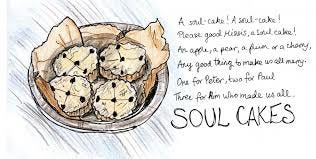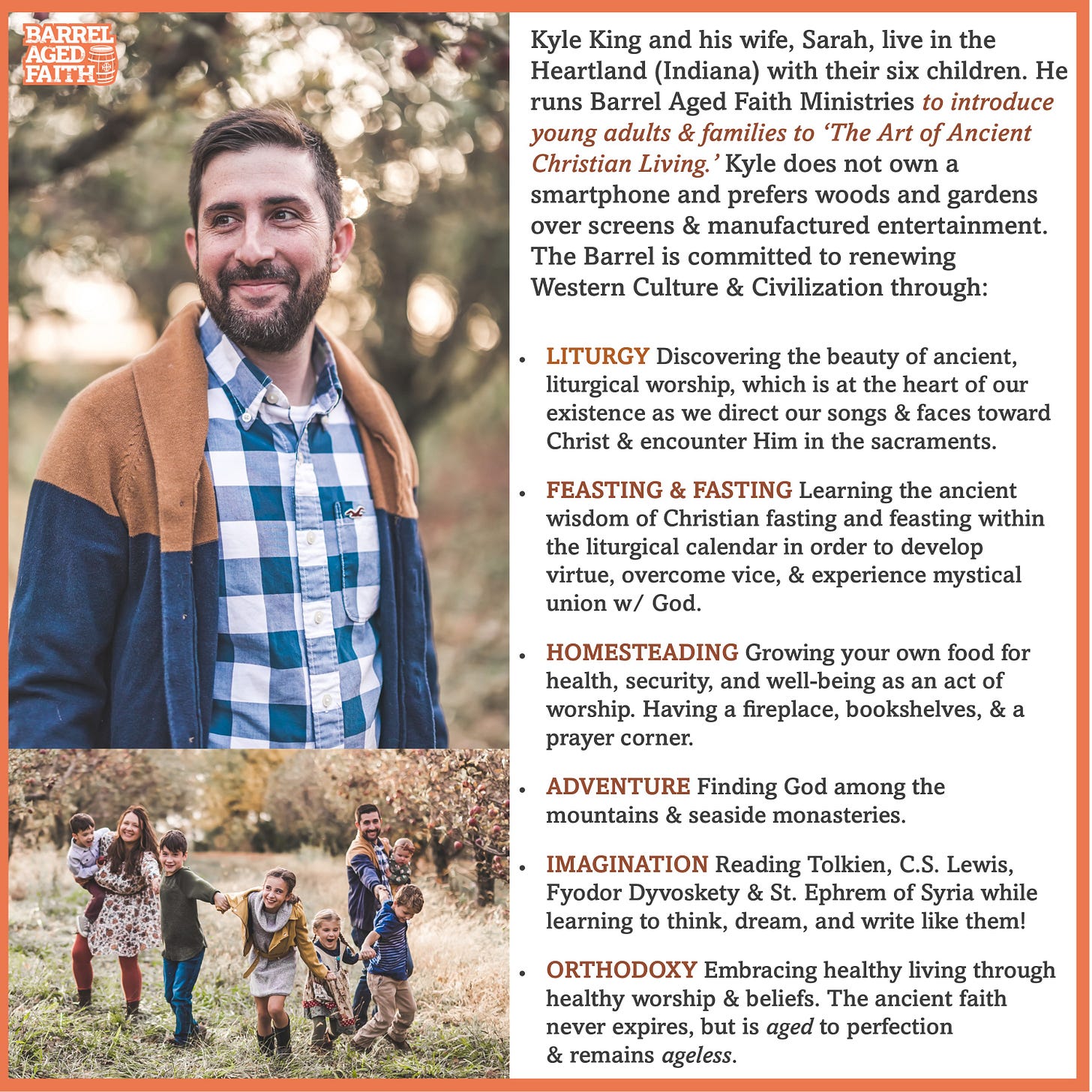Soul Cakes, Donuts, & the Halloween Fast
Why Christians used to Fast on 'All Hallow's Eve' + Traditional Recipes

I grew up in an evangelical home that refused to participate in anything associated with Halloween. Overall, my parents’ ‘spidey sense’ was spot on. We avoided the demonic and pagan so that we could embrace a Christ-centered life focused on living out the Kingdom of God and sharing the Gospel with others. This was a good thing.
It was not until I became interested in the history of ancient Christian worship (i.e. liturgy, holy days, calendars) that I discovered that Halloween had something to do with the ‘holy’ (Our Father in heaven, ‘hallowed’ be your name). ‘To hallow’ means to ‘make holy.’
The History of the Hallowe’en Fast
To Christians in the West, Halloween wasn’t about celebrating the demonic, but Christ defeating the demonic and liberating mankind from the chains of sin and death. Halloween actually had an ‘Easter flavor.’ Hallowe’en was the eve of All Hallow’s Day on November 1st (also known as All Saints’ Day), which was a significant day of worship and celebration in the Christian West when all of the saints (‘hallowed’ ones; i.e. everyone in heaven) were commemorated.
Fr. Ismael Ayala touches on the history of this day:
“The feast that we know of today as “All Saints Day” originated in May 609, when Pope Boniface IV dedicated the Pantheon in Rome… In the eighth century, Pope Gregory III changed the date to November 1… and Pope Gregory IV later extended this celebration of all saints to the universal church.”1
The day before a Great Feast Day like All Saints’ Day is called a ‘vigil’ and has traditionally been a day of fasting, repentance, and prayer. In 866 AD, Pope Nicholas writes:
“On the sixth day of every week (Fridays) and on all the vigils of famous feasts one should cease from eating meat and should apply oneself to fasting, so that one may truly be able to say with the writer of the Psalms: Weeping shall last the night, but in the morning shall come happiness, their harvest of joy be in the eternal life.”2
The Catholic Encyclopedia 3 summarizes the history of fasting before great holy days or holidays:
“The fast on Christmas Eve is mentioned by Theophilus of Alexandria (d. 412), that before the Epiphany by St. John Chrysostom (d. 407), that before Pentecost by the Sacramentary of St. Leo I. Pope Nicholas I (d. 867), in his answer to the Bulgarians, speaks of the fast on the eves of Christmas and of the Assumption. The Synod of Erfurt (932) connects a fast with every vigil. The Synod of Seligenstadt (1022) mentions vigils on the eves of Christmas, Epiphany [Jan 6th], the feast of the Apostles [June 29th], the Assumption of Mary [August 15th], … and All Saints [November 1st], besides the fast of two weeks before the Nativity of St. John [June 24th].”
The Origin of Donuts, Soul Cakes, & Nutcrack Night
Fasting, however, doesn’t always means ‘no food.’ Ironically, some of the best food traditions originate on fast days when people abstained from meat (and even meat by-products in many cases). The Bavarian Pretzel was commonly eaten during Lent. Pierogis (potato stuffed ‘ravioli’) were popular in Poland and eastern Europe on fast days. Apparently, soul cakes and donuts were popular in England during All Hallow’s Eve.

Jessica over at Catholic Cuisine recounts the origin of soul cakes in England:
In her book (which I highly recommend!) The Year & Our Children: Catholic Family Celebrations for Every Season, Mary Reed Newland says: Begging at the door grew from an ancient English custom of knocking at doors to beg for a “soul cake” in return for which the beggars promised to pray for the dead of the household. Soul cakes, a form of shortbread — and sometimes quite fancy, with currants for eyes — became more important for the beggars than prayers for the dead, it is said.
Jessica also discusses a legend about the origins of donuts in connection to Halloween!
“Florence Berger tells in her Cooking for Christ a legend of a zealous cook who vowed she would invent soul cakes to remind them of eternity at every bite. So she cut a hole in the middle and dropped it in hot fat, and lo — a doughnut. Circle that it is, it suggests the never-ending of eternity. Truth or legend, it serves a good purpose at Halloween.”4
Apparently, Halloween was also called “Nutcrack Night” in England when children would gather around the fireplace with their parents to enjoy various nuts, apples, and cider.
Below is a video recipe for soul cakes if you want to give them a try! If you prefer written instructions, here is a traditional, English recipe: https://www.cookist.com/soul-cake/
Does that mean that Christians were not actually fasting, but instead stuffing themselves with breads and pizzas all day? By no means! A fast day generally means ‘no meat’ the entire day, and no food until noon or 3pm. (In the ancient church, they often broke their fast at sunset and still do in parts of the Middle East). You were also not supposed to over-indulge. That was for the next day on the Feast Day!
Are you interested in learning more about why Christians have historically prayed for the dead since Biblical times? I would recommend my book, The Ascent, to you! You may also enjoy this short video on the topic:
Happy Fasting and Feasting on Hallowmas!
-Kyle
https://www.nationalshrine.org/blog/what-is-the-significance-of-all-saints-day/#:~:text=The%20feast%20that%20we%20know,to%20the%20Blessed%20Virgin%20Mary.
https://carleton-wp-production.s3.amazonaws.com/uploads/sites/83/2019/06/Nicholas_s_Responses_to_the_Bulgarians_for_MARS_website.pdf
https://www.newadvent.org/cathen/05647a.htm
https://showerofrosesblog.com/2008/fasting-and-feasting-during-hallowtide/#






I think I'm going to make soul cakes tomorrow! Thanks for sharing the truth about Halloween!